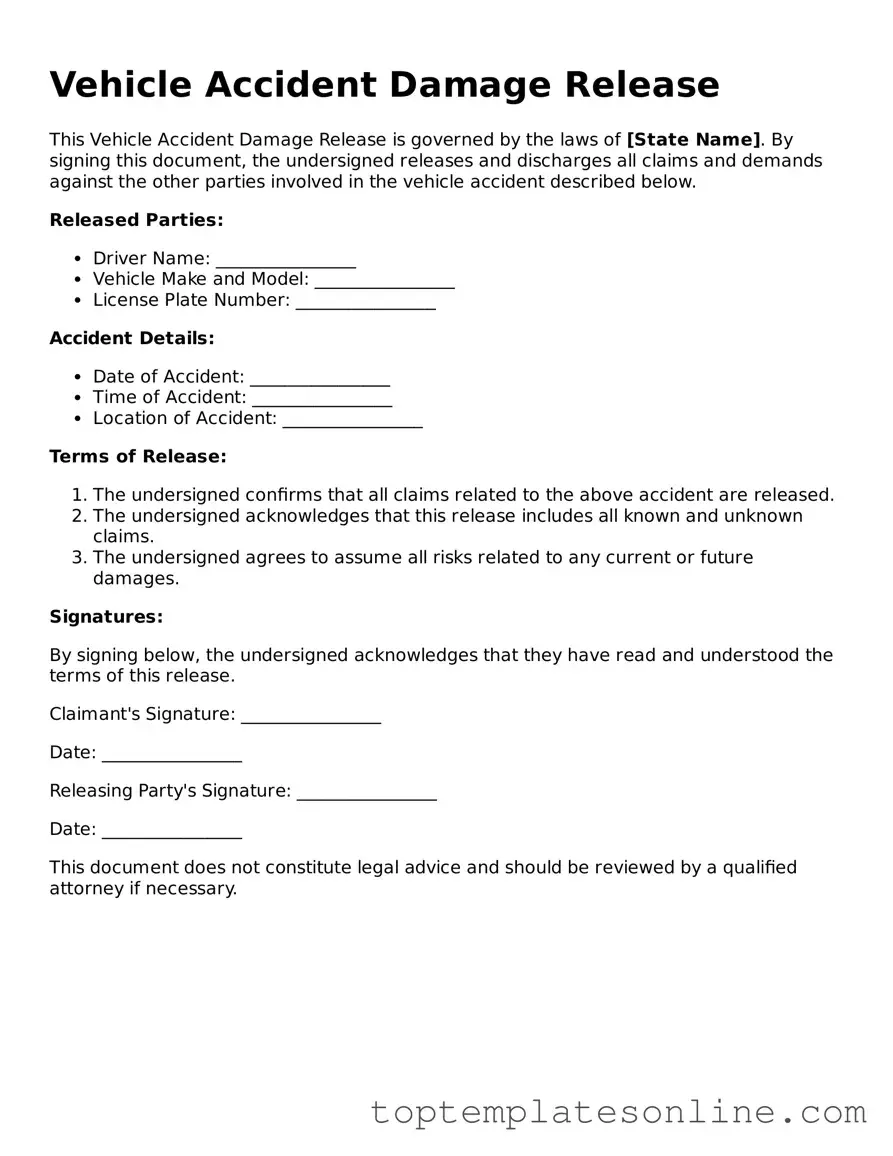Attorney-Approved Vehicle Accident Damage Release Form
The Vehicle Accident Damage Release form serves as a legal document that allows individuals involved in a vehicle accident to formally relinquish their right to claim further damages after receiving compensation. This form typically outlines the details of the accident and the agreed-upon settlement, ensuring that both parties understand the terms of the release. By signing, the parties can move forward, minimizing the potential for future disputes related to the incident.
Customize Vehicle Accident Damage Release Here
